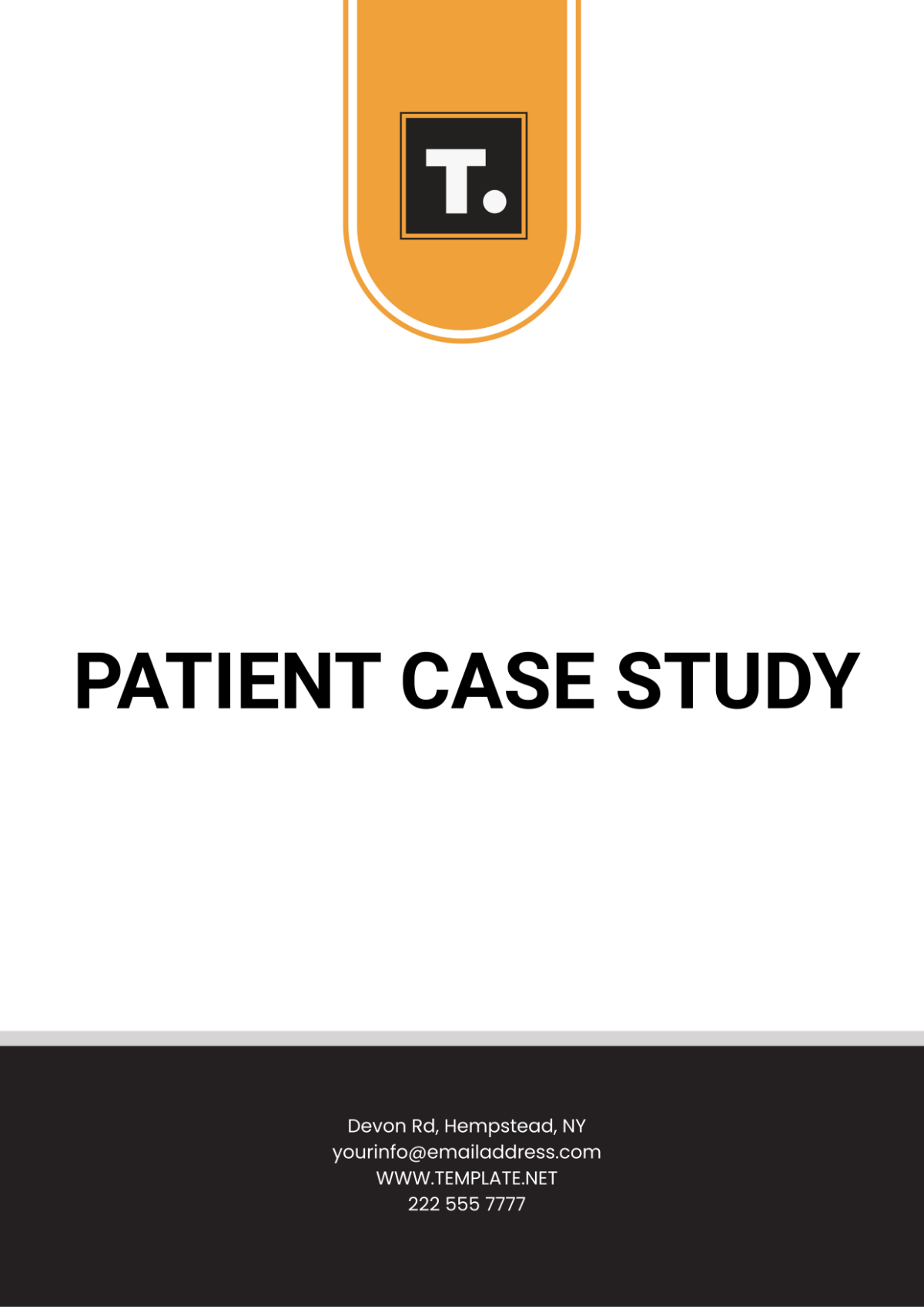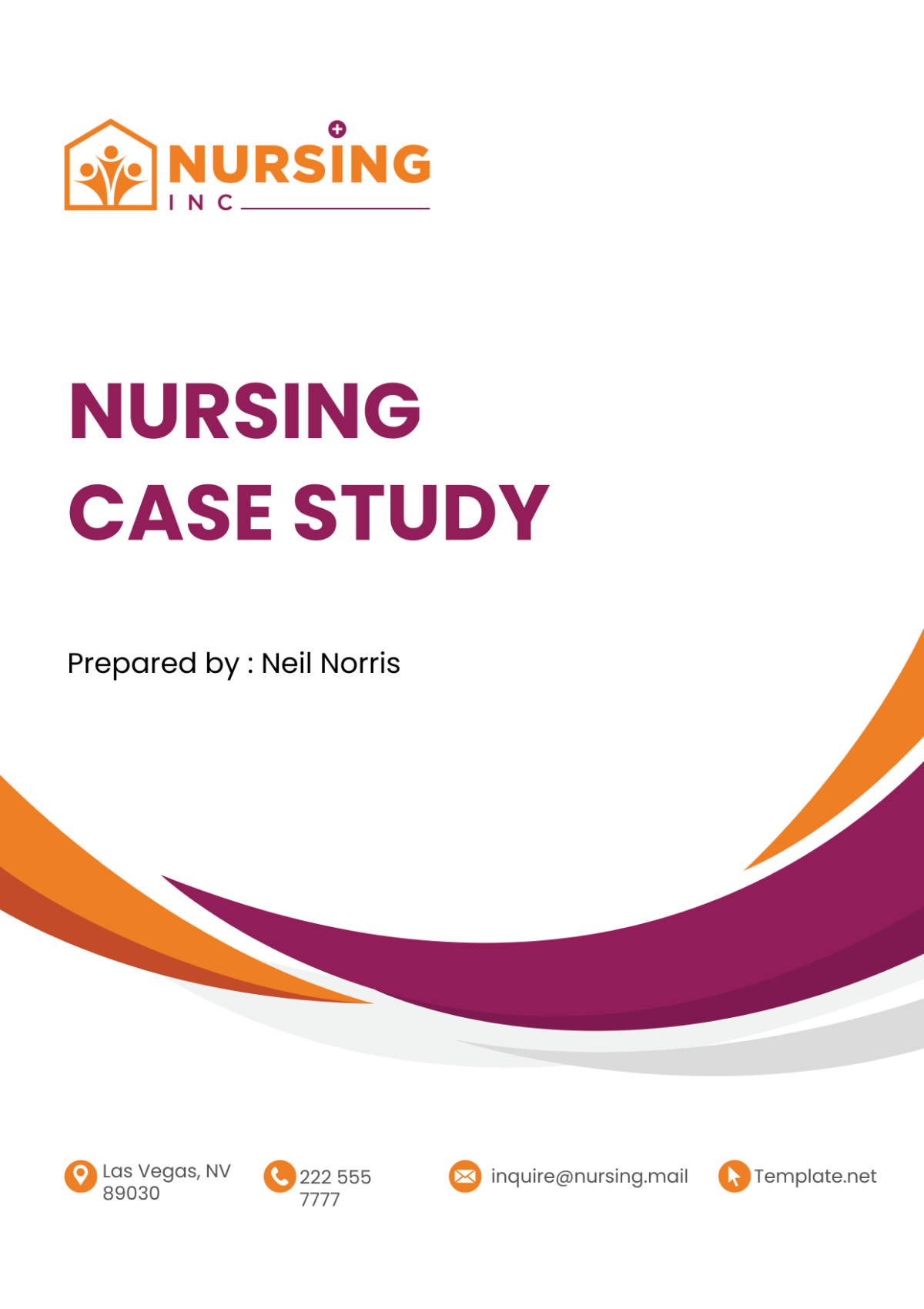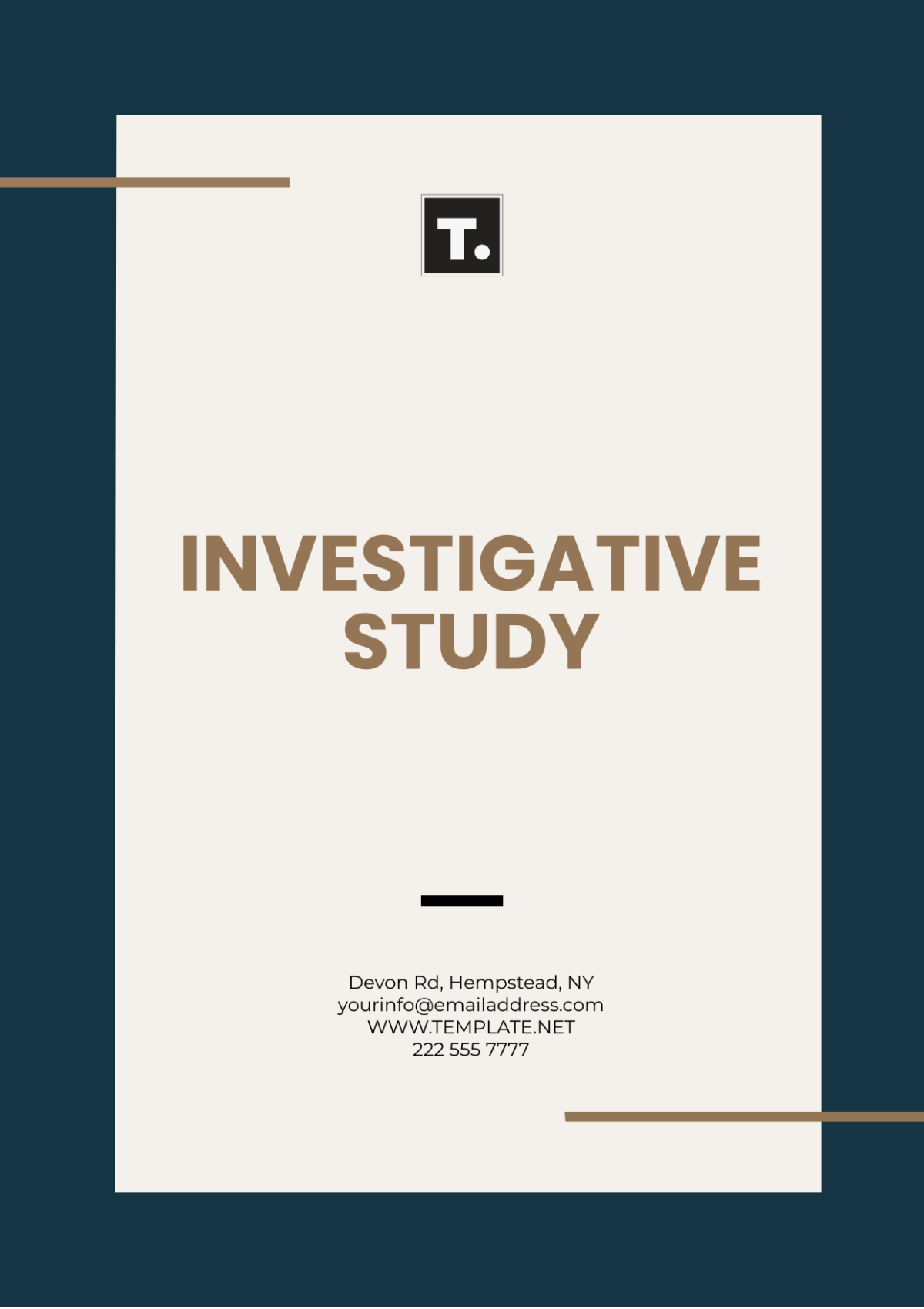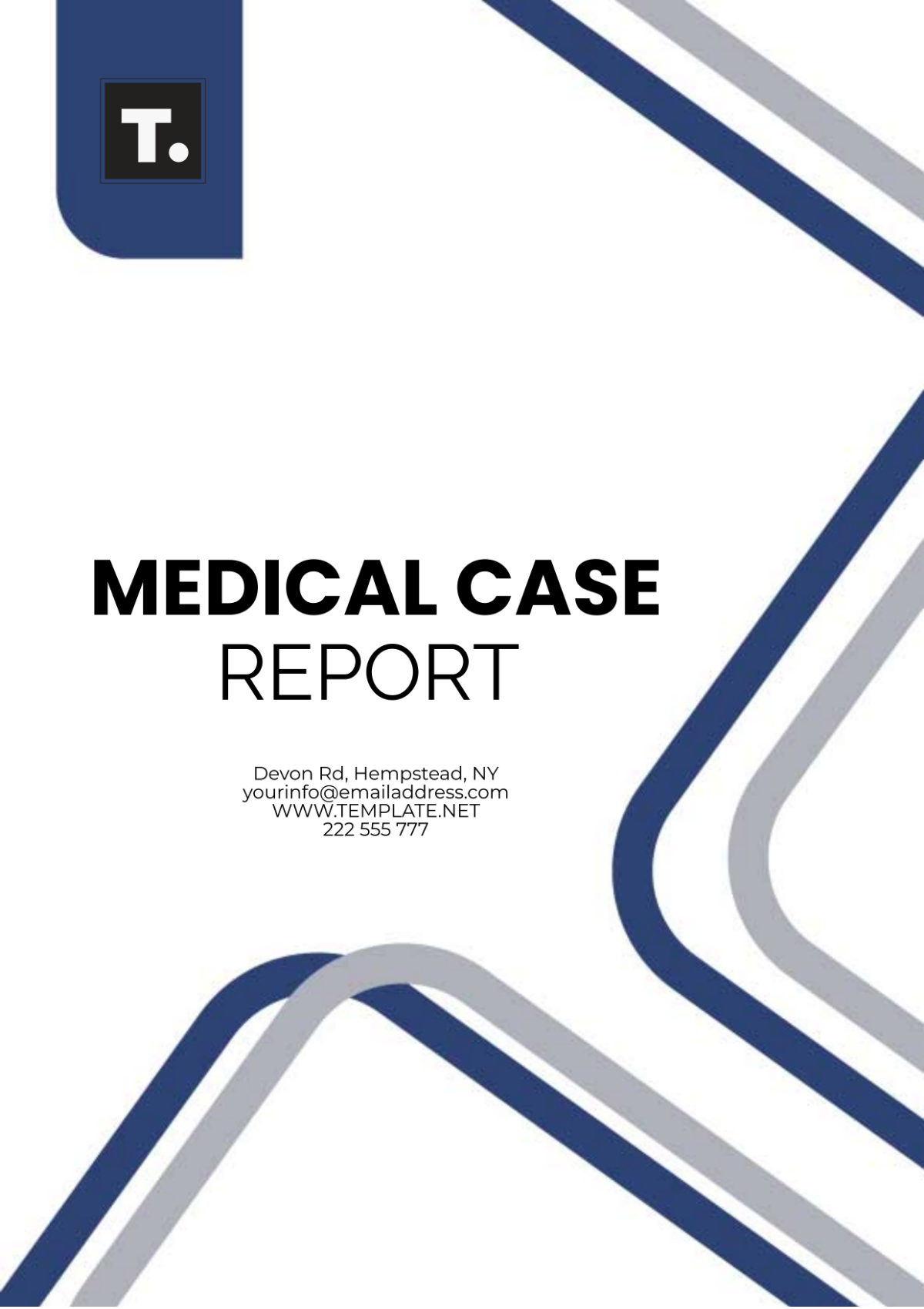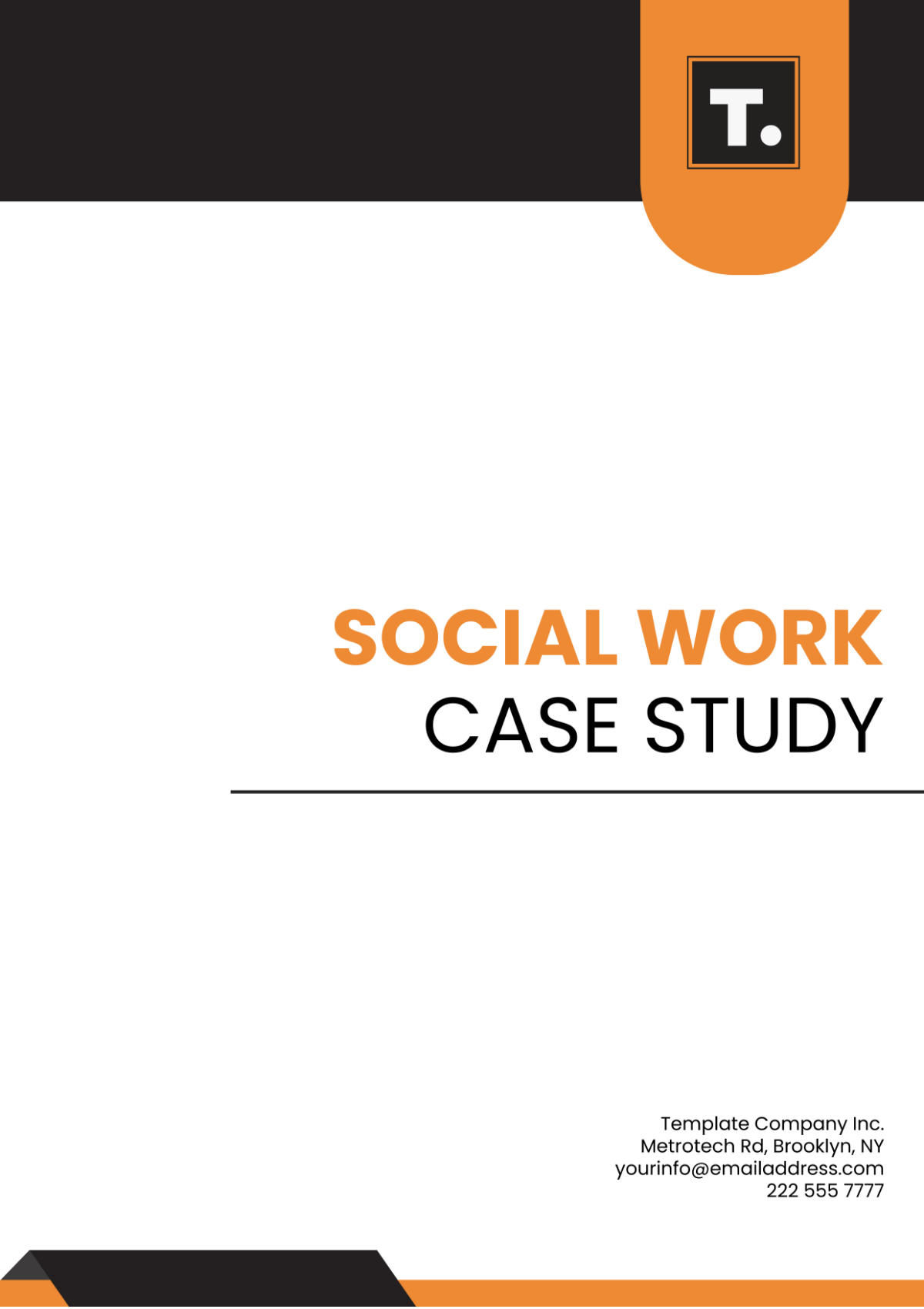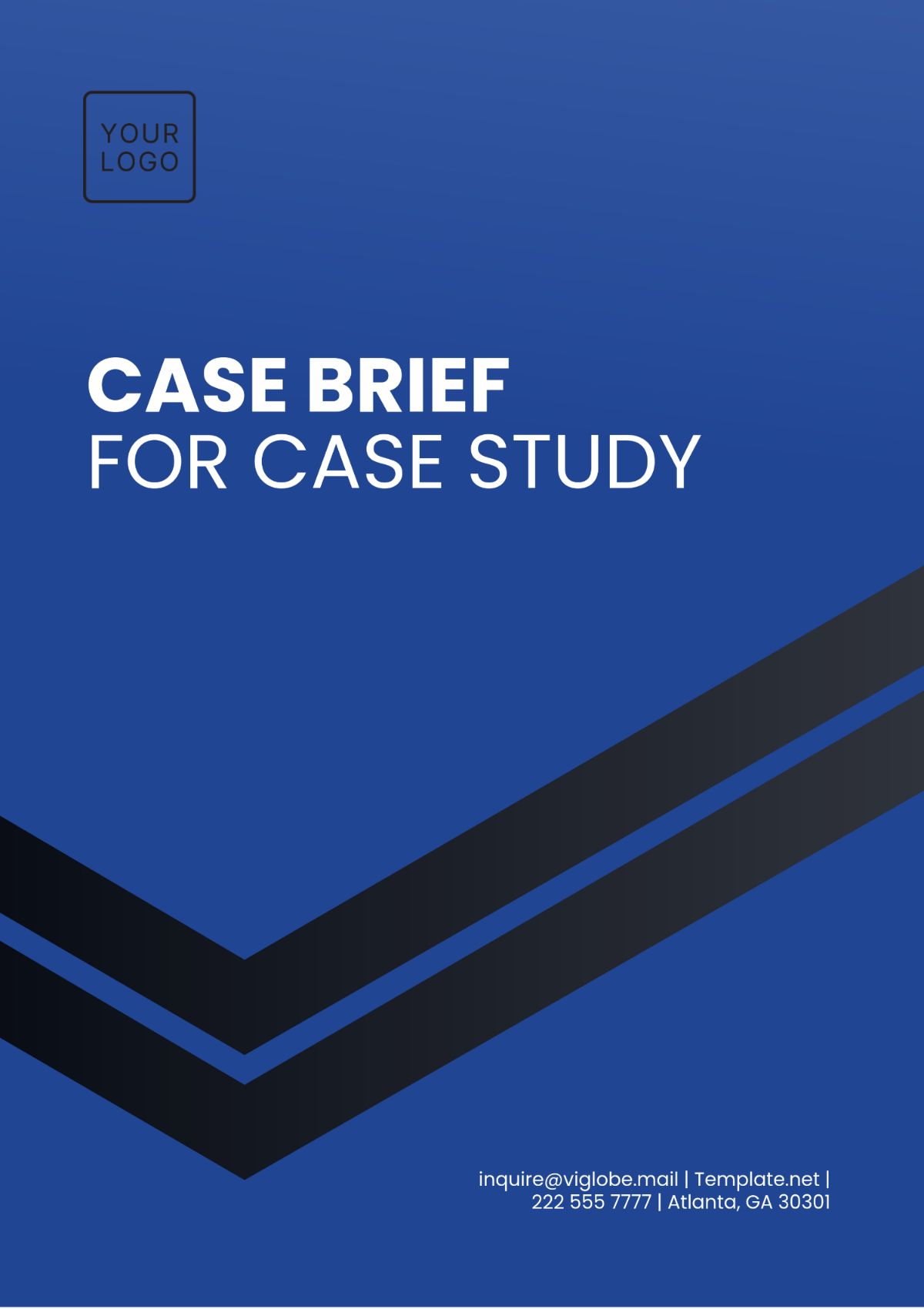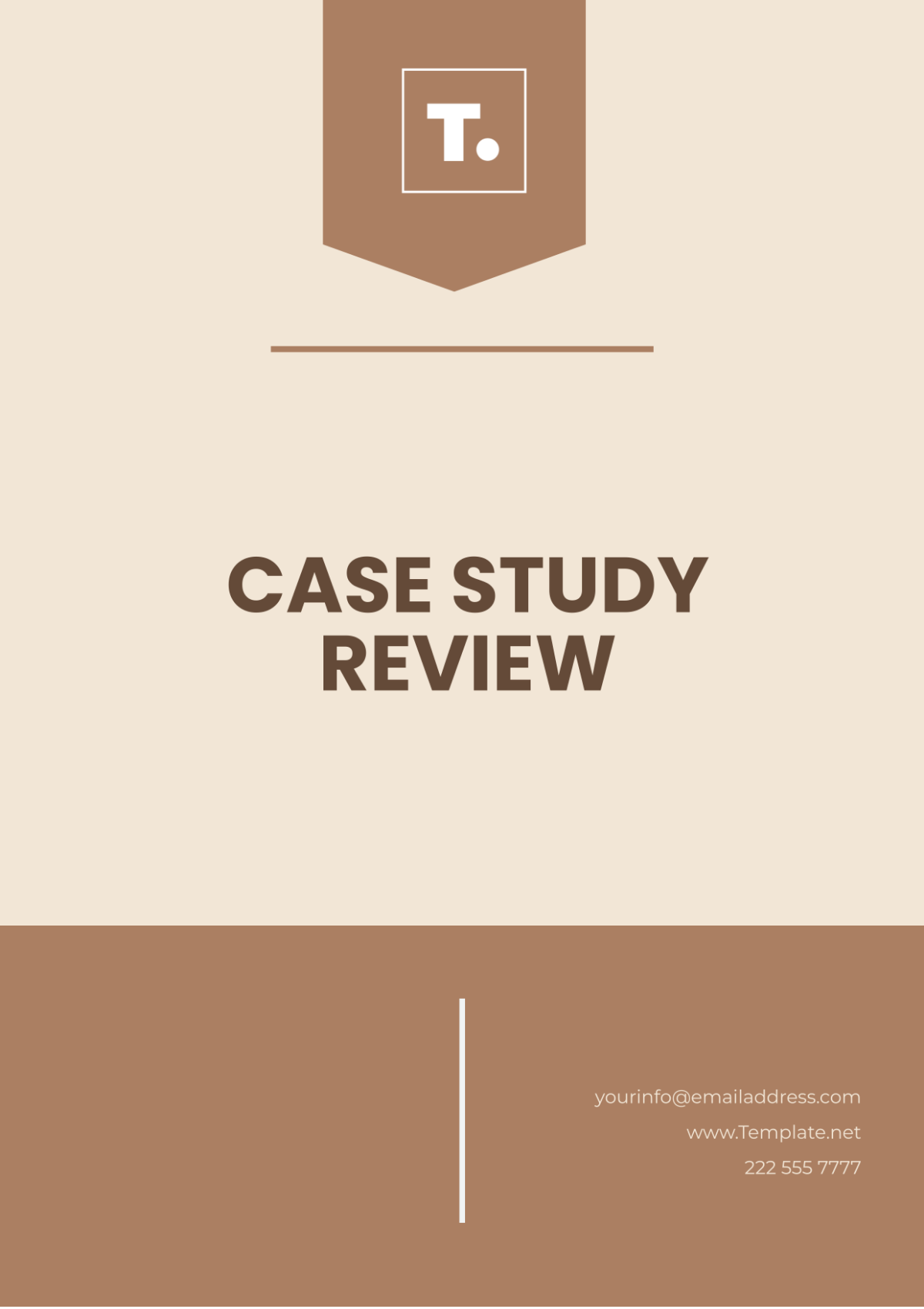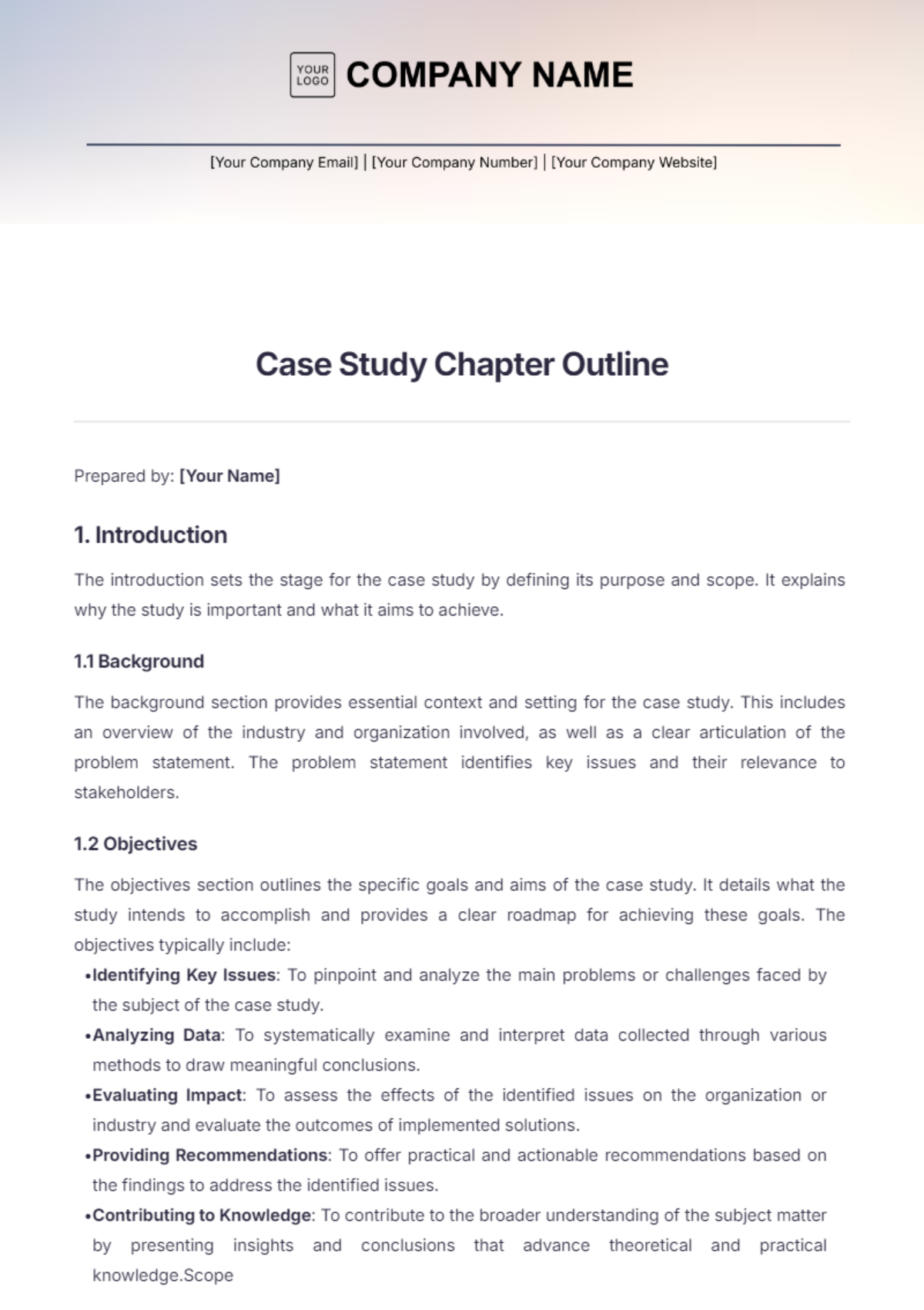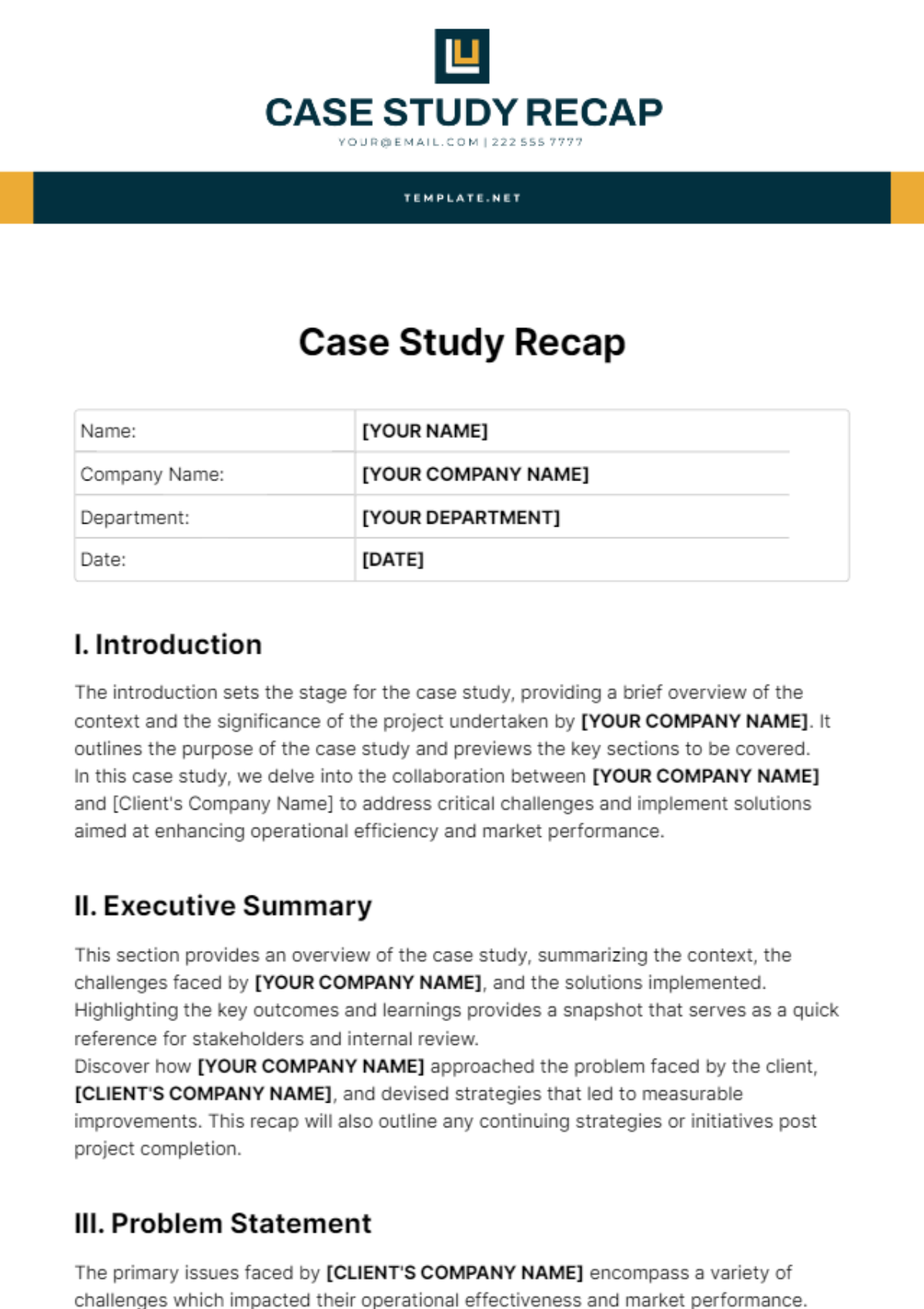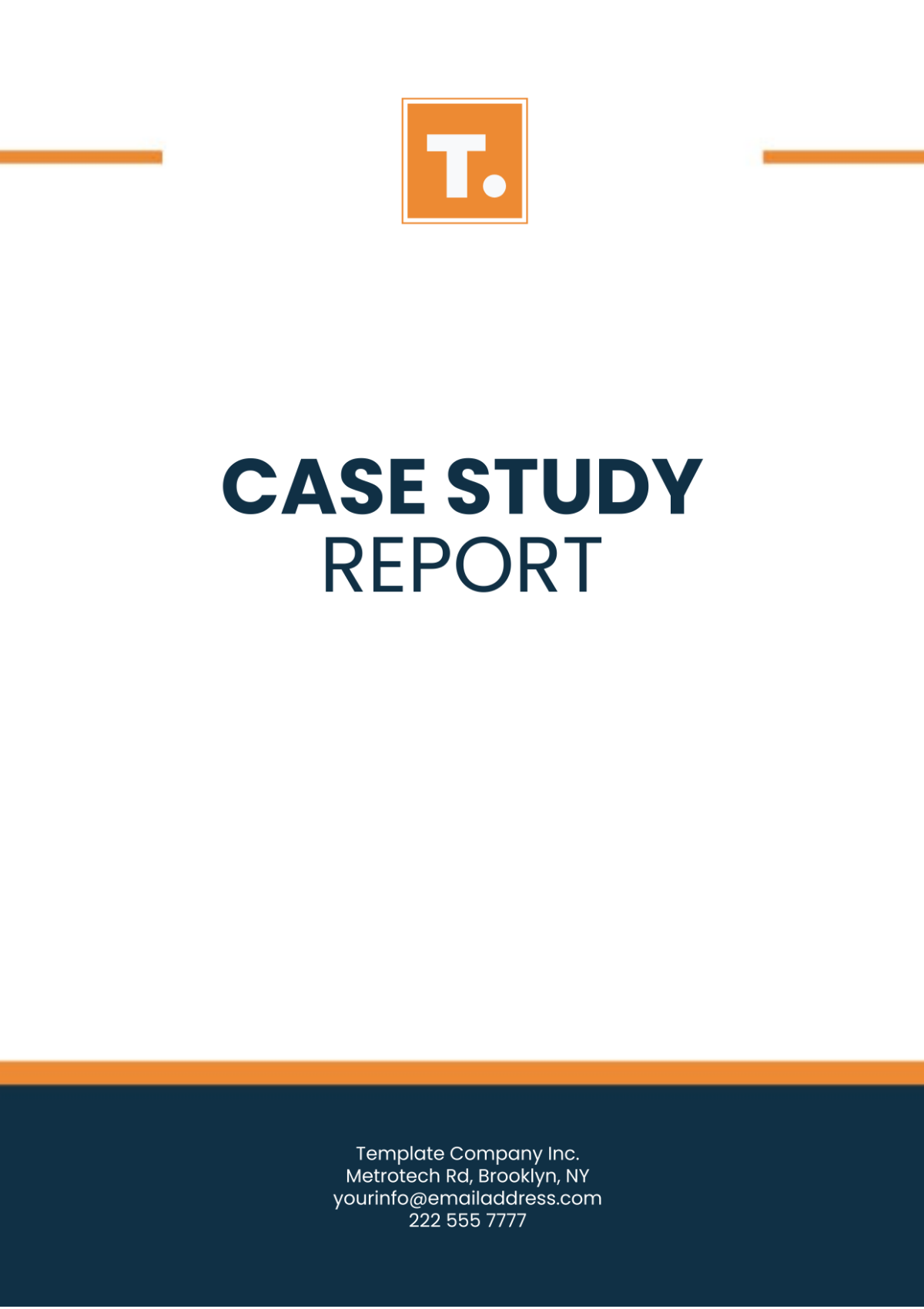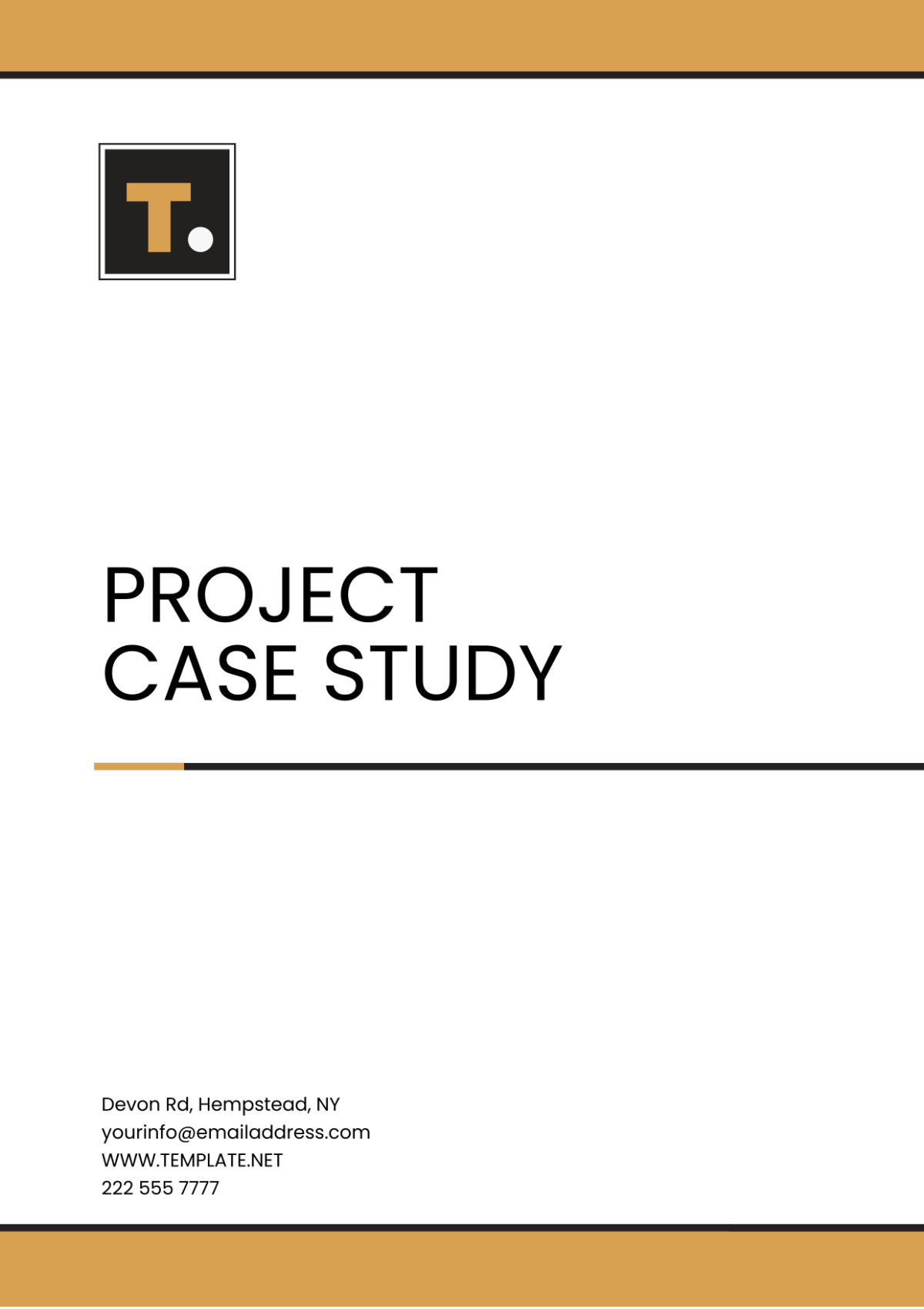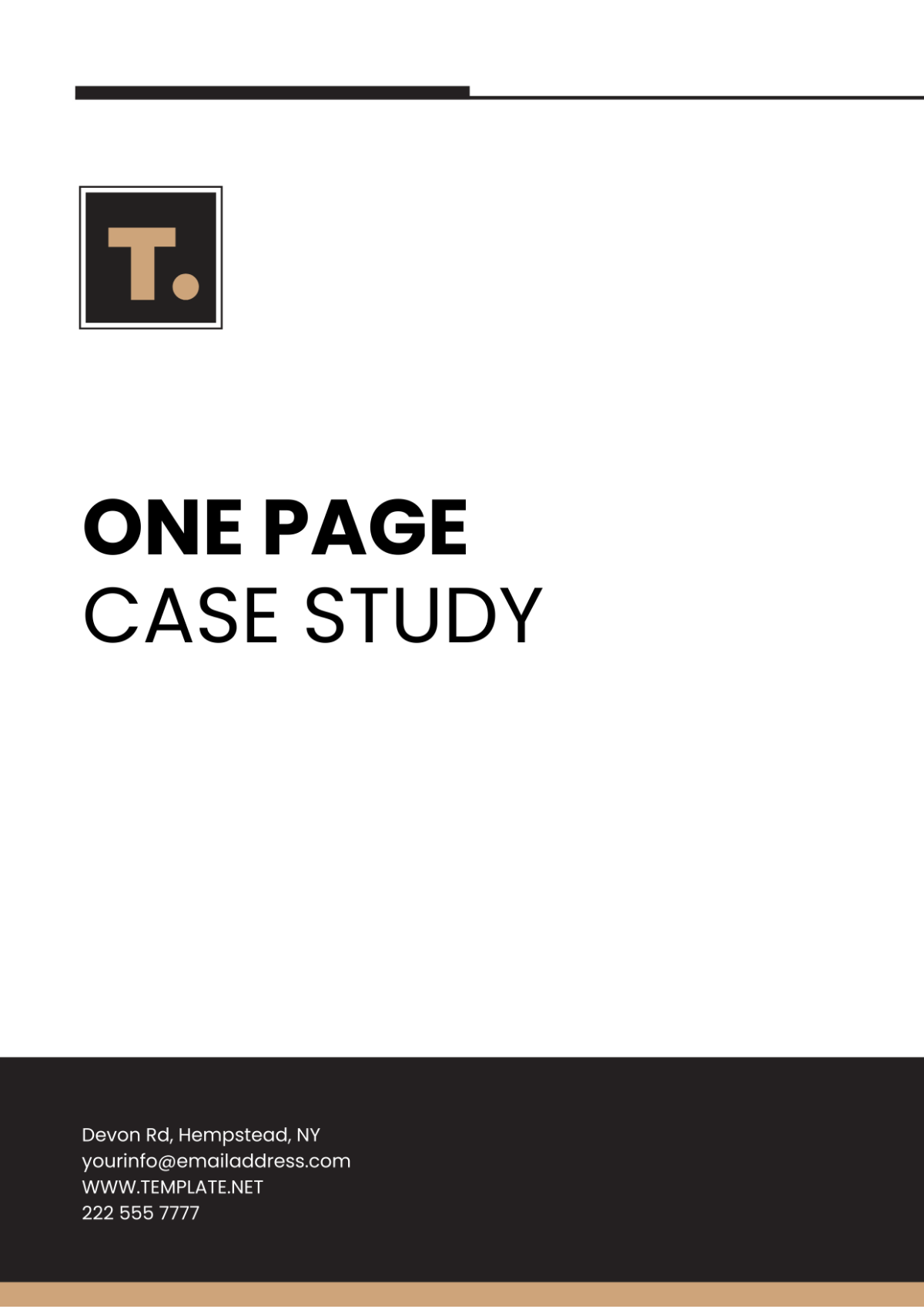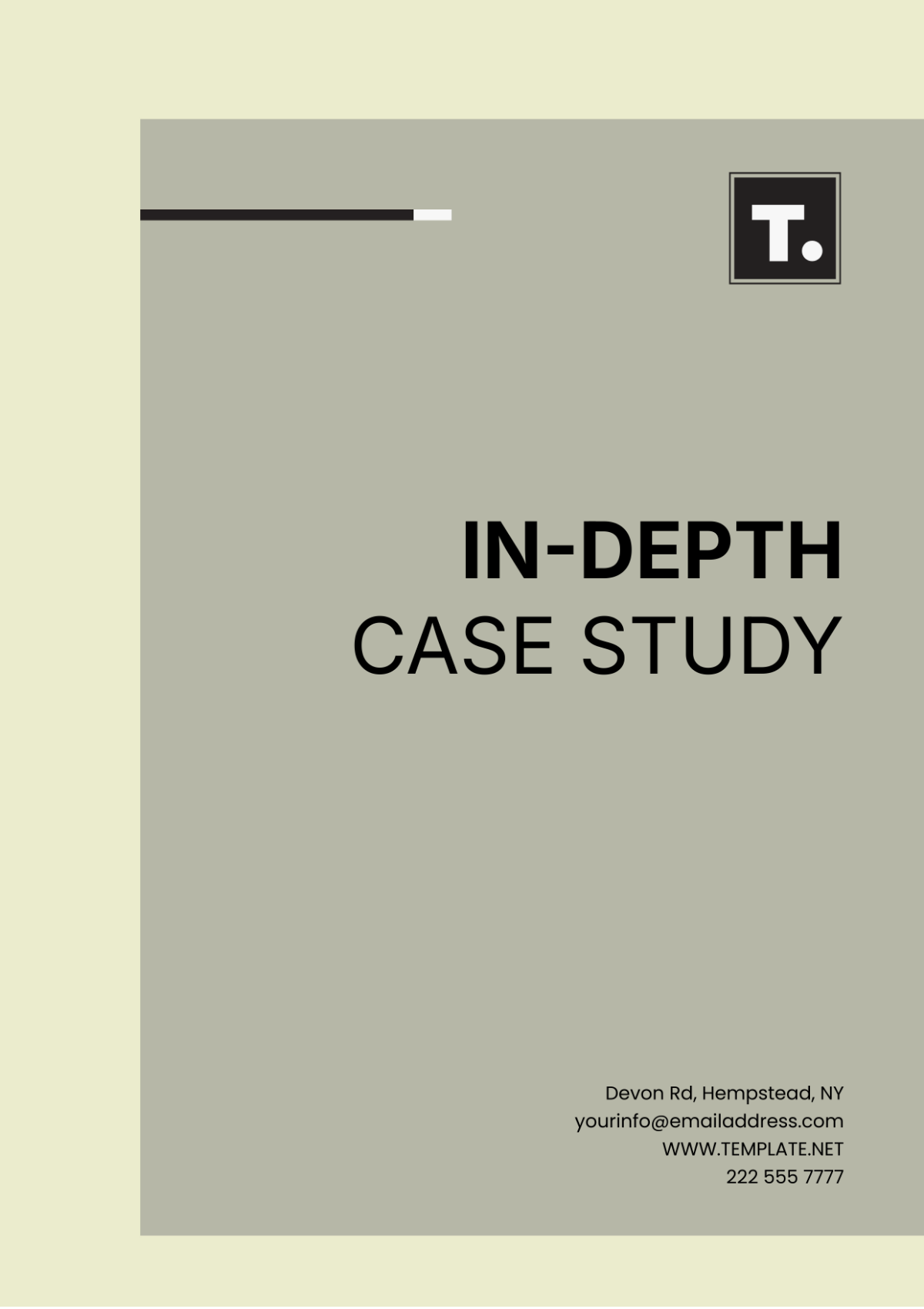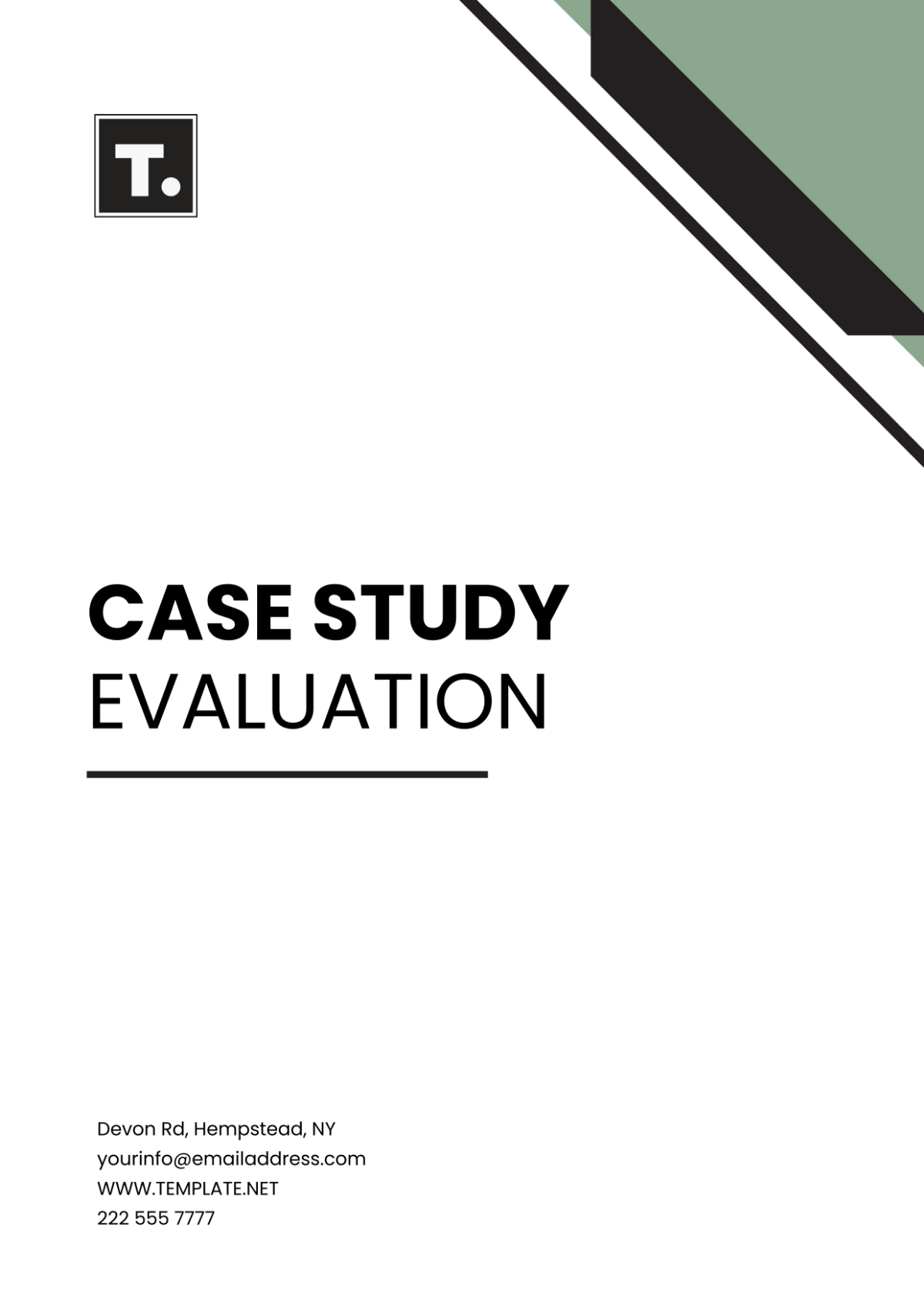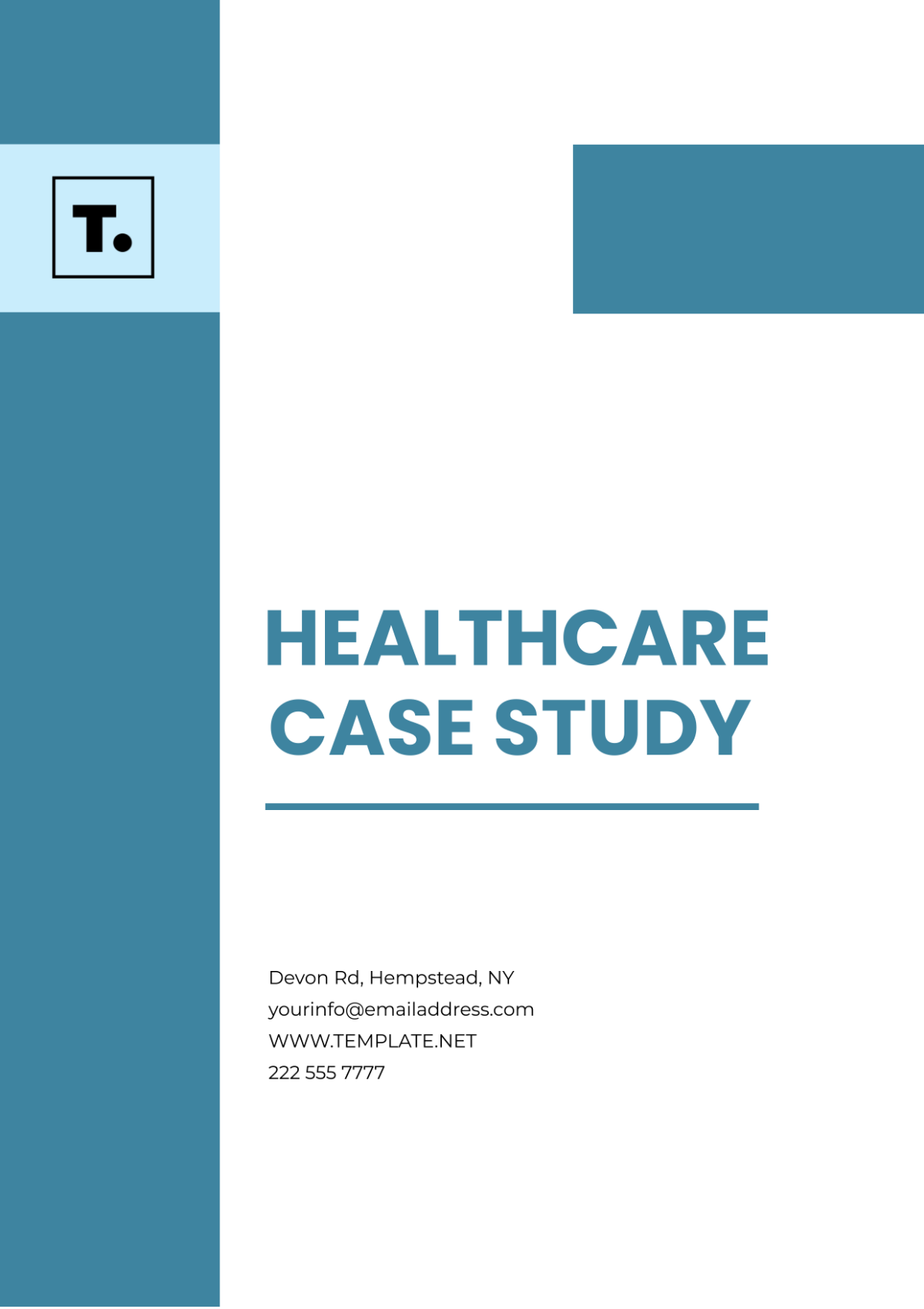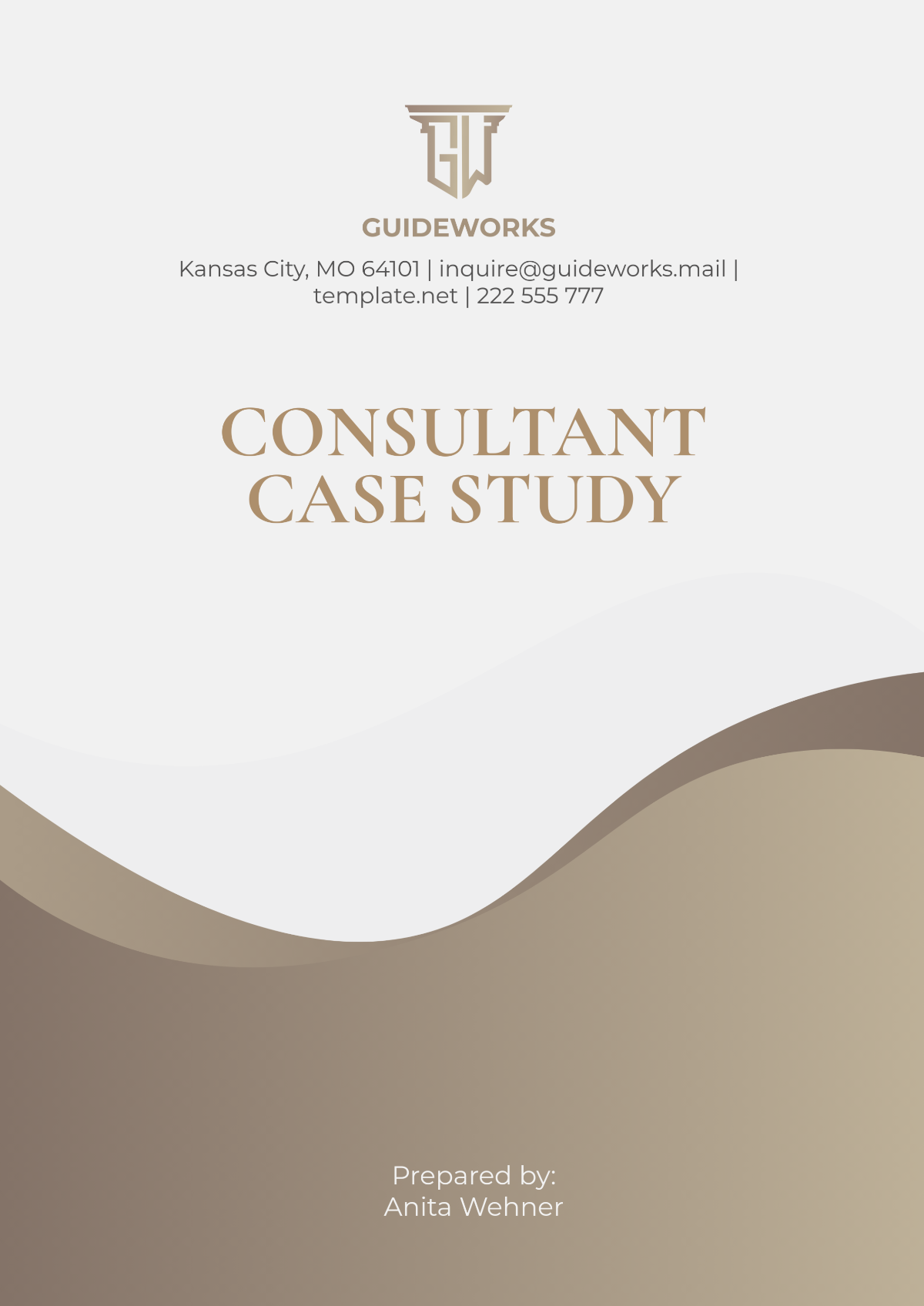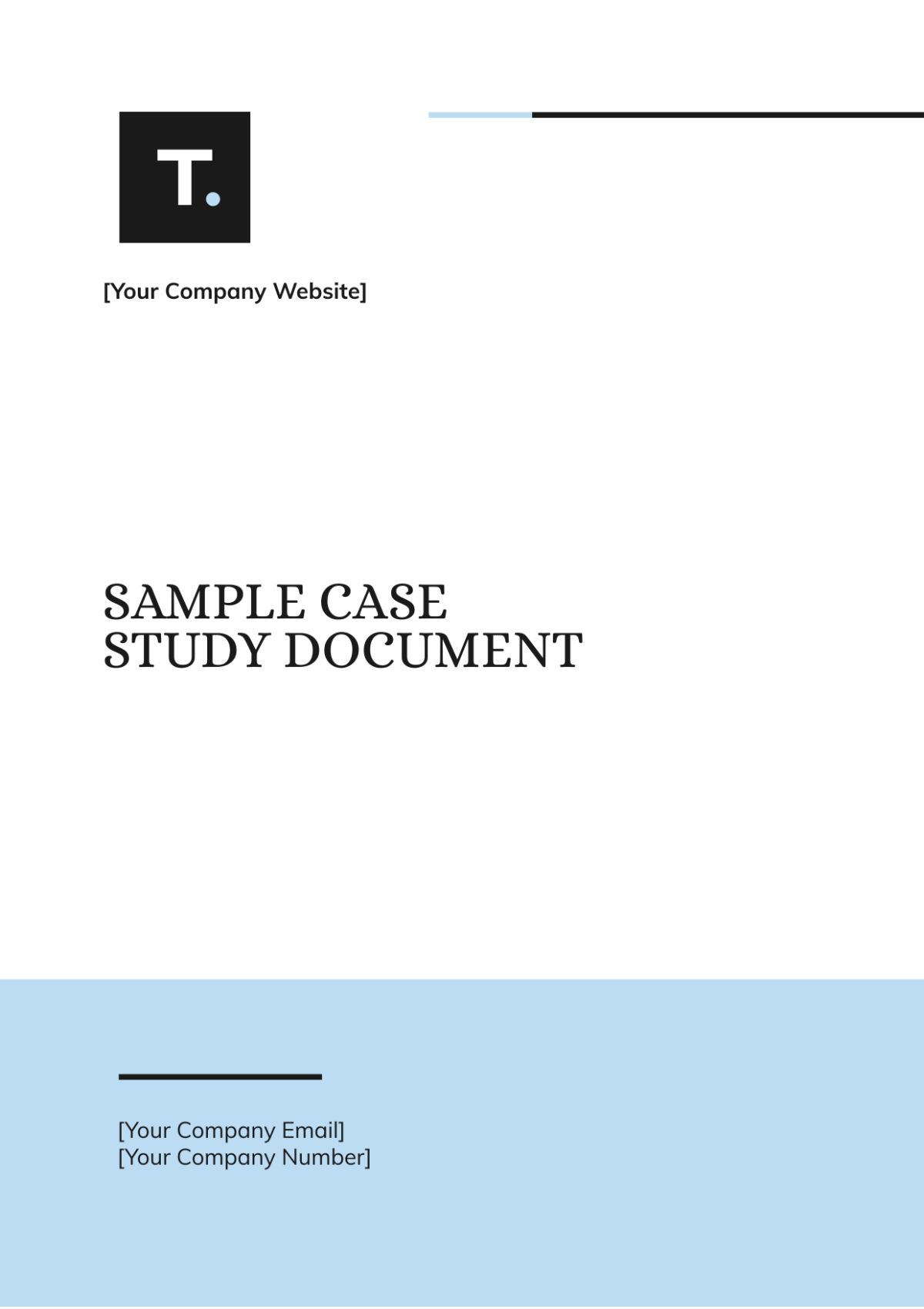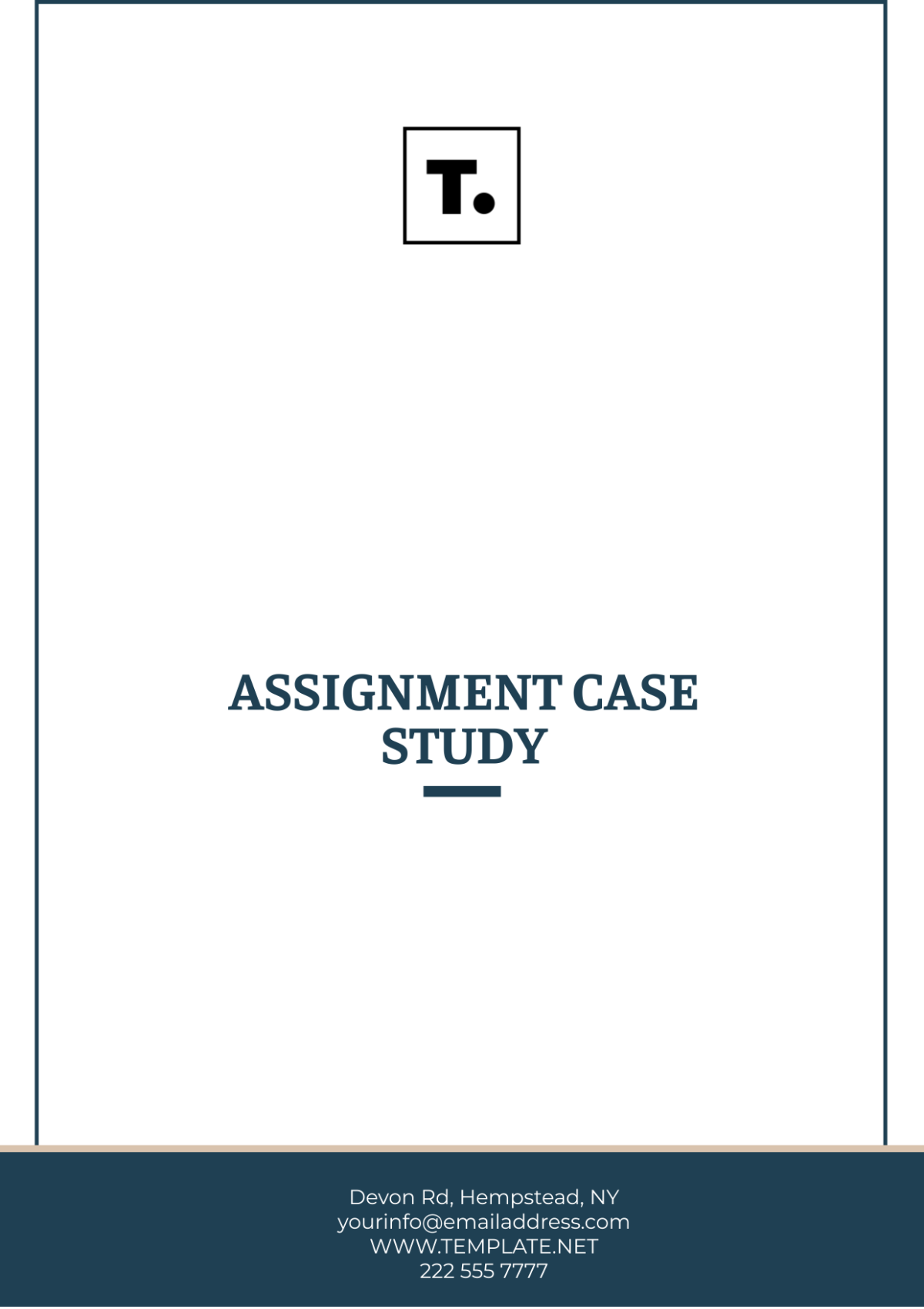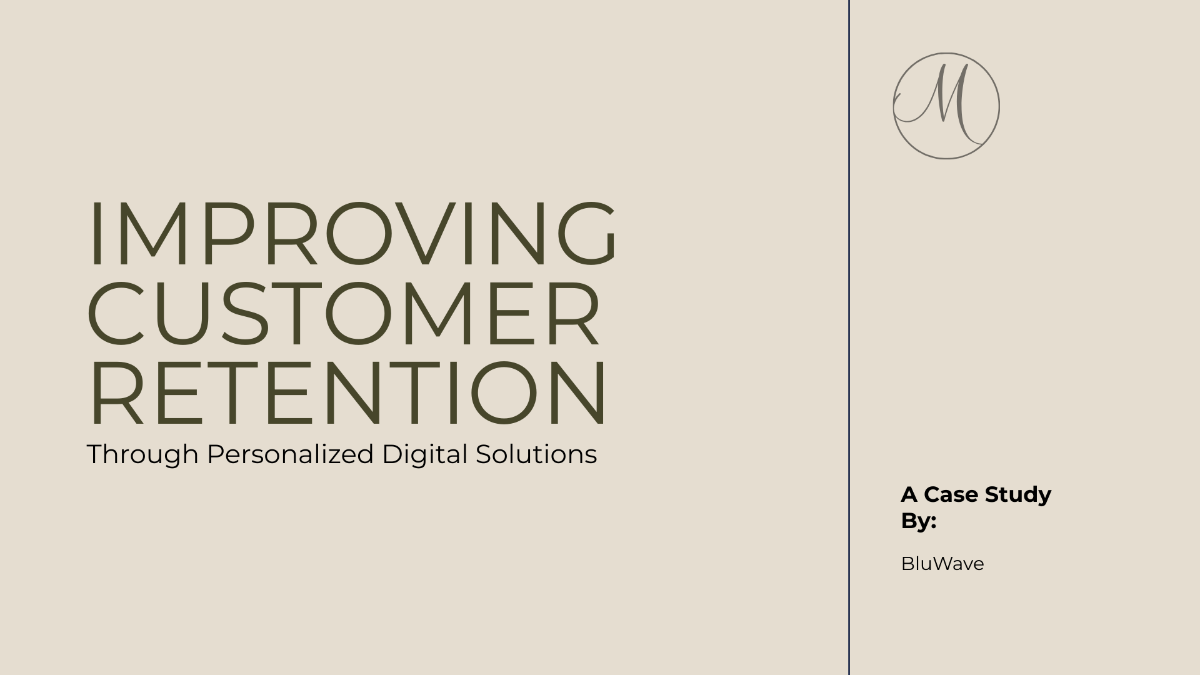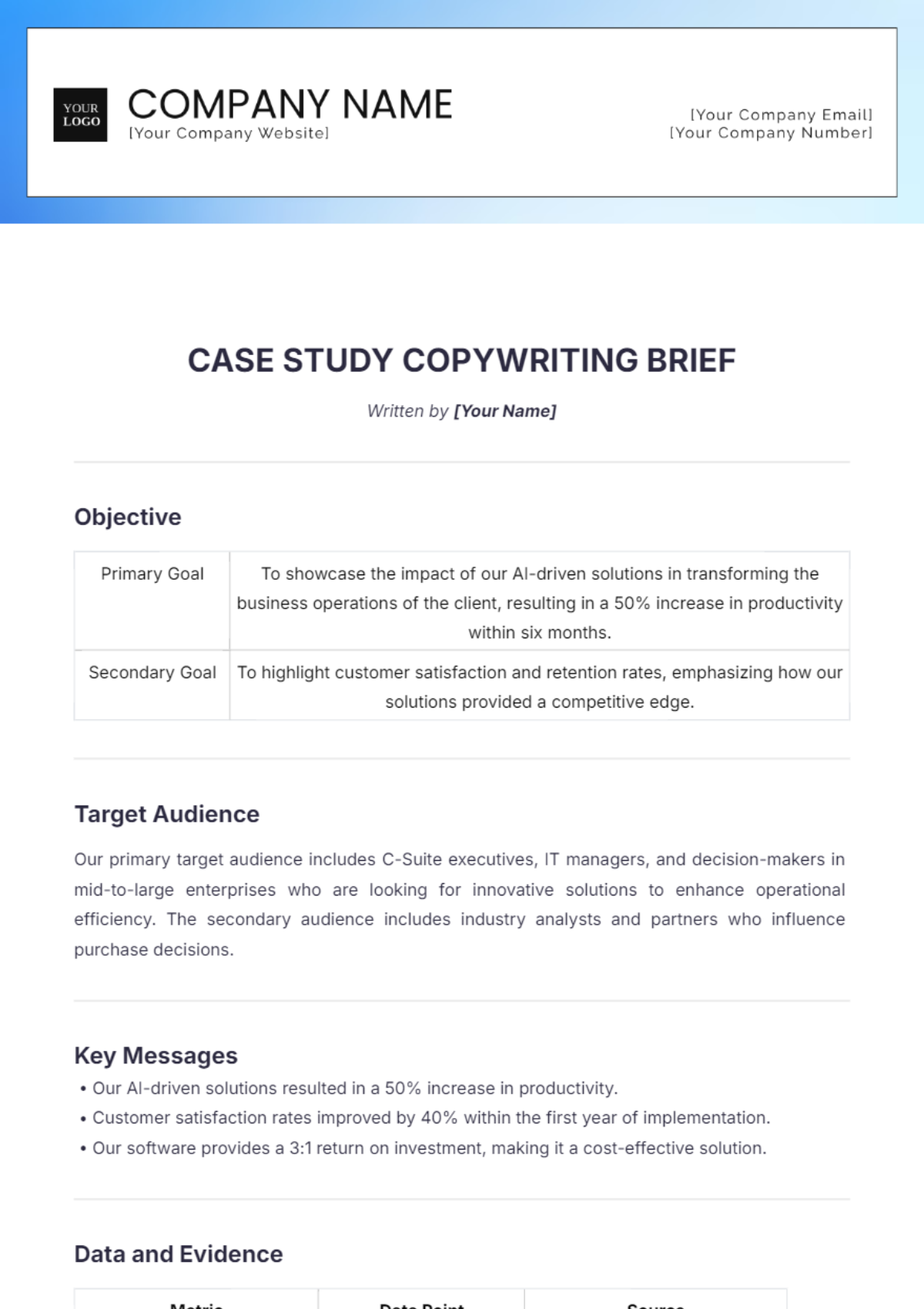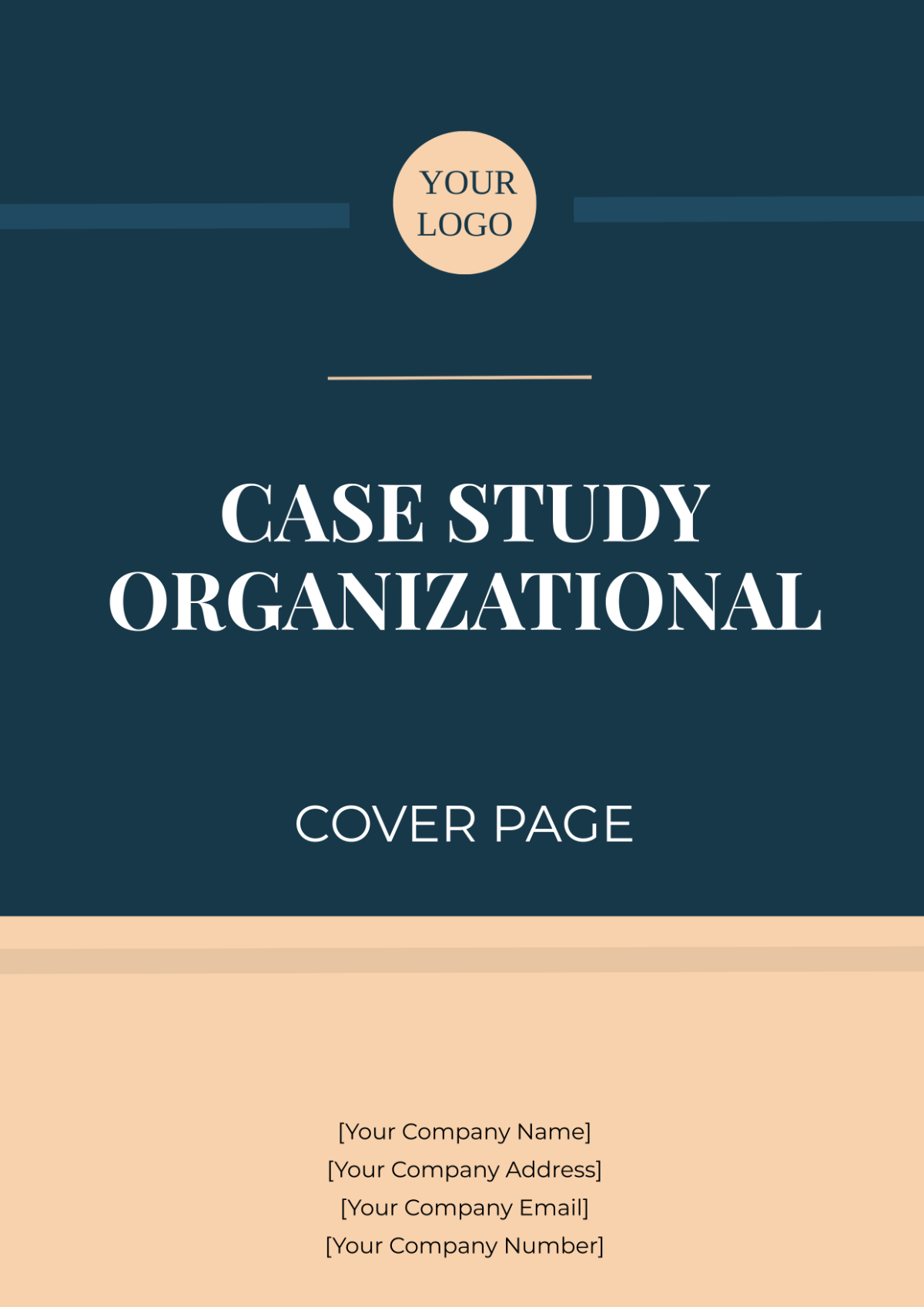Case Study on Hazard Mitigation
Executive Summary
A. Overview of the Hazard Mitigation Case
Kath's Company recognized the paramount importance of safeguarding its operations, employees, and stakeholders from potential hazards. In this context, a rigorous hazard mitigation initiative was undertaken to address various natural and man-made risks that could potentially disrupt business continuity and impact the well-being of individuals associated with the company.
This case study offers an in-depth insight into the journey taken by Kath's Company to establish a robust hazard mitigation strategy. The study traces the process from hazard identification to comprehensive mitigation, showcasing the key findings, strategies, and the tangible outcomes achieved.
B. Key Findings and Recommendations
1. Identified Potential Hazards: Through exhaustive research and hazard assessments, Kath's Company identified three primary hazards that posed a significant risk:
Earthquake: Extensive geological studies and seismic data analysis revealed that the region is susceptible to seismic activities, with a probability of 5% over the next 20 years.
Flood: Hydrological assessments showed that the company's location is prone to periodic flooding, especially during the rainy season. Historical data indicated that the area experiences major flooding approximately once every five years.
Wildfire: Extensive wildfire risk assessments indicated that the proximity to dense forests increased the susceptibility to wildfires. The region has witnessed an average of 10 wildfires per year in recent history.
2. Vulnerability Analysis: In parallel with hazard identification, a vulnerability analysis was conducted, revealing critical vulnerabilities within the organization:
Infrastructure Vulnerabilities: Aging infrastructure components, such as the main production facility built in 1990, were identified as susceptible to earthquake damage.
Workforce Vulnerabilities: An assessment of workforce preparedness indicated a need for enhanced safety training and awareness programs. Only 40% of employees had received earthquake safety training.
Supply Chain Vulnerabilities: Vulnerabilities within the supply chain were identified, especially in critical suppliers located in flood-prone regions.
3. Development of a Multi-Pronged Mitigation Strategy: The hazard mitigation strategy was designed to be multi-faceted, addressing the specific risks identified. It encompassed:
Retrofitting of Vulnerable Infrastructure: Detailed engineering assessments led to a comprehensive retrofitting plan for critical infrastructure components. The budget allocated for infrastructure retrofitting was $1.5 million.
Establishment of Emergency Response Protocols: Protocols were developed for immediate response to flood and wildfire incidents, ensuring the safety of employees and assets. An annual training program with a budget of $100,000 was implemented.
Training Programs: Extensive employee training programs were conducted to enhance their ability to respond effectively during crises. This included earthquake safety drills and fire evacuation training.
Collaboration with Local Authorities: Kath's Company forged collaborative partnerships with local authorities to enhance coordination during emergency situations. A dedicated emergency response team was established, with an annual budget of $250,000.
C. Resource Allocation: To implement the mitigation strategy, a budget of $2.5 million was allocated. Resources were strategically distributed according to the priority of each mitigation measure, ensuring an efficient and effective allocation of resources.
Introduction
A. Background Information
Kath's Company, a leading and innovative organization in the tech industry, operates with a strong commitment to excellence, safety, and sustainability. As part of this commitment, the company recognized the need to proactively address potential hazards that could disrupt its operations, jeopardize the safety of its employees, and affect the continuity of services provided to clients and stakeholders.
The decision to initiate a comprehensive hazard mitigation plan was driven by a deep sense of responsibility to safeguard not only the physical assets but also the lives and livelihoods of those associated with the organization. With this mission in mind, Kath's Company embarked on a journey to create a robust and effective hazard mitigation strategy.
B. Scope of the Hazard Mitigation Project
The hazard mitigation project, undertaken by Kath's Company, was meticulously designed to cover a wide spectrum of aspects and considerations. The scope of the project encompassed:
1. Identifying Potential Hazards and Their Impact: Rigorous research and analysis were conducted to identify the types of hazards that could potentially affect the company. The project focused on three primary hazards: earthquake, flood, and wildfire.
2. Assessing Vulnerabilities: An in-depth vulnerability analysis was conducted to understand the company's susceptibility to these hazards. Vulnerable areas and assets were identified, including aging infrastructure, potential workforce vulnerabilities, and supply chain vulnerabilities.
3. Developing a Comprehensive Mitigation Strategy: A multi-faceted strategy was developed with clear goals and objectives to reduce the impact of hazards. The strategy included retrofitting of critical infrastructure, establishment of emergency response protocols, training programs, and collaborative efforts with local authorities.
4. Resource Allocation: To ensure the successful implementation of the mitigation strategy, a budget of $2.5 million was allocated. Resources were allocated judiciously to prioritize the most critical aspects of mitigation.
Hazard Assessment
A. Identification of Hazards
The hazard assessment phase involved extensive research and analysis to identify and characterize potential hazards that could impact Kath's Company.
1. Earthquake:
Analysis: Geological studies and seismic data analysis revealed that the region where Kath's Company operates is situated near an active fault line, increasing the susceptibility to seismic activities.
Probability: Based on historical data and seismic modeling, there is an estimated 5% probability of a significant earthquake (magnitude 6.0 or higher) occurring in the region within the next 20 years.
Impact: Such an earthquake has the potential to cause severe structural damage to buildings and facilities, disrupt utility services, and pose significant risks to employee safety.
2. Flood:
Analysis: Hydrological assessments and historical flood data were used to assess the flood risk to Kath's Company.
Seasonal Risk: The region experiences a higher flood risk during the rainy season, typically lasting from November to April. Major flooding events occur approximately once every five years.
Impact: Flooding poses a threat to the company's infrastructure, supply chain, and employee safety. It can result in business disruptions, property damage, and logistical challenges.
3. Wildfire:
Analysis: Extensive wildfire risk assessments were conducted, considering factors such as proximity to forests and historical wildfire data.
Annual Incidence: On average, the region experiences approximately 10 wildfires per year, with varying degrees of severity.
Impact: Wildfires can lead to air quality issues, evacuation requirements, and damage to natural surroundings. Additionally, they pose a risk to facilities, especially if situated in close proximity to forested areas.
B. Risk Assessment
The risk assessment phase aimed to quantify the potential impact of each hazard on Kath's Company.
1. Earthquake Risk Assessment:
Risk Matrix: A risk matrix was created, considering factors such as earthquake magnitude, proximity to the fault line, and building vulnerability.
This assessment indicated a high-risk level for specific facilities and assets.
Potential Loss Estimates: Based on the risk matrix, potential loss estimates were calculated, revealing that a significant earthquake could result in an estimated $10 million in damage and business interruption costs.
2. Flood Risk Assessment:
Risk Mapping: Flood risk maps were developed, highlighting vulnerable areas within the company's premises and supply chain locations.
Impact Analysis: An analysis indicated that a major flood event could disrupt production for up to one week, resulting in potential revenue losses of $5 million.
3. Wildfire Risk Assessment:
Fire Hazard Zones: The region was categorized into fire hazard zones, with proximity to forests and vegetation density taken into account.
Evacuation Plans: Evacuation plans were developed, considering the potential impact of wildfires on employee safety and facility damage.
C. Vulnerability Analysis
The vulnerability analysis phase focused on assessing vulnerabilities within the organization, including infrastructure, workforce, and supply chain.
1. Infrastructure Vulnerabilities:
Building Assessment: Detailed structural assessments were conducted for all facilities. Findings indicated that the main production facility, built in 1990, had vulnerabilities that needed addressing.
Retrofitting Plan: A retrofitting plan was developed, specifying structural upgrades required to enhance earthquake resilience.
2. Workforce Vulnerabilities:
Training Programs: Employee surveys and assessments revealed that only 40% of the workforce had received earthquake safety training. A comprehensive training program was designed to address this gap, including annual safety drills.
3. Supply Chain Vulnerabilities:
Critical Suppliers: An analysis of the supply chain identified critical suppliers located in flood-prone regions. Mitigation measures included diversifying suppliers and establishing contingency plans.
Mitigation Strategy
A. Goals and Objectives
The hazard mitigation strategy developed by Kath's Company had clear and measurable goals and objectives to reduce the impact of hazards.
Minimize Infrastructure Damage: The primary goal was to minimize structural damage to facilities and critical infrastructure during seismic events, floods, and wildfires.
Ensure Employee Safety: Ensuring the safety of employees was a top priority. The goal was to equip employees with the knowledge and tools to respond effectively to hazards.
Maintain Business Continuity: Maintaining business continuity, even during hazard events, was a key objective. The strategy aimed to reduce downtime and revenue losses.
B. Action Plan
Kath's Company developed a comprehensive action plan detailing the specific steps and measures to achieve the goals and objectives of the hazard mitigation strategy.
1. Retrofitting of Vulnerable Infrastructure:
Scope: The retrofitting plan covered critical infrastructure components, including the main production facility, office buildings, and warehouses.
Budget: A budget of $1.5 million was allocated for the retrofitting project, which included structural enhancements, reinforcement, and seismic retrofitting.
2. Establishment of Emergency Response Protocols:
Protocols: Detailed emergency response protocols were developed, outlining procedures for earthquake, flood, and wildfire scenarios.
Training: Employees received extensive training on these protocols, including regular drills and simulations.
Budget: An annual training program with a budget of $100,000 was implemented to ensure workforce readiness.
3. Collaboration with Local Authorities:
Partnerships: Collaborative partnerships were established with local authorities. Joint emergency response plans were developed, ensuring seamless coordination during crisis situations.
Dedicated Team: A dedicated emergency response team was formed, with an annual budget of $250,000 allocated to support their activities and resources.
C. Resource Allocation
To support the successful implementation of the mitigation strategy, Kath's Company allocated resources judiciously.
Budget: A budget of $2.5 million was allocated for the hazard mitigation project.
Resource Distribution: Resources were distributed according to the priority of each mitigation measure, ensuring an efficient and effective allocation of funds and manpower.
Implementation and Execution
A. Execution of Mitigation Measures
The successful execution of mitigation measures is crucial to achieving the goals and objectives outlined in the hazard mitigation strategy. Kath's Company took a systematic approach to implement these measures:
1. Retrofitting of Vulnerable Infrastructure
Contractor Selection: A competitive bidding process was conducted to select qualified contractors for the retrofitting projects.
Timely Implementation: Retrofitting work commenced promptly to ensure the structural enhancements were completed within the designated time frame.
Quality Control: Rigorous quality control measures were implemented to ensure that the retrofitting met industry standards and specifications.
2. Establishment of Emergency Response Protocols:
Training Workshops: Comprehensive training workshops were conducted to educate employees on the newly developed emergency response protocols.
Simulations: Realistic simulations of earthquake, flood, and wildfire scenarios were carried out to assess the effectiveness of the protocols.
Feedback Loop: Feedback from employees was actively sought and incorporated to continually improve the protocols.
3. Collaboration with Local Authorities:
Regular Meetings: Kath's Company held regular meetings and coordination sessions with local authorities to enhance collaboration and coordination during hazard events.
Resource Sharing: The sharing of resources and expertise with local authorities was facilitated to bolster the collective response to emergencies.
Emergency Drills: Joint emergency drills involving local authorities and Kath's Company personnel were conducted to fine-tune response procedures.
B. Monitoring and Evaluation
Continuous monitoring and evaluation are essential to assess the effectiveness of mitigation measures and make necessary adjustments:
1. Infrastructure Retrofitting:
Periodic Inspections: Regular inspections of retrofitted infrastructure are conducted to ensure that structural enhancements remain intact and effective.
Post-Earthquake Assessment: A post-earthquake assessment plan is in place to evaluate the performance of retrofitted structures after a seismic event.
2. Emergency Response Protocols:
Drill Assessments: The outcomes of emergency response drills are meticulously evaluated, and lessons learned are integrated into protocol enhancements.
Employee Feedback: Employee feedback and incident reports are analyzed to identify areas for protocol improvement.
3. Collaboration with Local Authorities:
Performance Metrics: Key performance metrics, such as response time and resource allocation, are continuously monitored to gauge the effectiveness of collaboration efforts.
Feedback Mechanisms: Feedback mechanisms are established to allow local authorities to provide input on Kath's Company's emergency response and vice versa.
Results and Outcomes
A. Achievements
The hazard mitigation efforts undertaken by Kath's Company have yielded significant achievements and tangible outcomes:
1. Infrastructure Resilience:
Enhanced Structural Integrity: The retrofitting of vulnerable infrastructure has significantly improved structural integrity, reducing the risk of damage during seismic events.
Minimized Business Disruption: As a result, business disruptions due to structural damage have been minimized, resulting in cost savings and maintaining production continuity.
2. Employee Safety:
Improved Safety Awareness: Extensive training programs have led to a substantial improvement in employee safety awareness and readiness to respond to hazards.
Enhanced Employee Well-being: Kath's Company has achieved a higher level of employee well-being and confidence in workplace safety.
3. Business Continuity:
Reduced Downtime: The mitigation strategy has effectively reduced downtime during hazard events, allowing for quicker recovery and reduced revenue losses.
Strengthened Supply Chain: Mitigation measures in the supply chain have bolstered resilience against flood-related disruptions.
B. Return on Investment
The investment in hazard mitigation has proven to be a sound decision for Kath's Company:
Cost Savings: The mitigation measures have resulted in cost savings by preventing extensive damage and minimizing business disruptions. The estimated return on investment (ROI) is [220]%.
Enhanced Reputation: Kath's Company's commitment to safety and resilience has enhanced its reputation, leading to increased stakeholder trust and confidence.
Conclusion
The hazard mitigation efforts of Kath's Company have not only strengthened its ability to withstand potential hazards but have also positioned the organization as a responsible and resilient leader in the industry. The systematic approach to identifying hazards, implementing mitigation measures, and continuous monitoring and evaluation has been instrumental in achieving these positive outcomes. As the company looks towards the future, it remains dedicated to maintaining a safe and secure environment for its employees and ensuring business continuity in the face of adversity.
